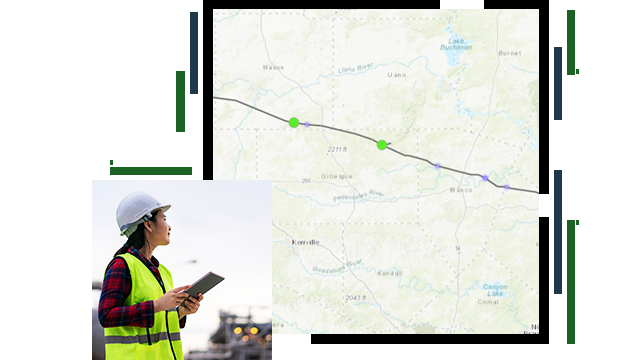Inspections and maintenance
Planned and unplanned inspections and maintenance are among a pipeline mobile worker's most common tasks and workflows. On the ground, in the air, and in-line, pipeline operator staff and resources are continually checking, patrolling, and assessing the condition of the pipeline and whether it is operating as it should be. Findings from the field, once saved to ArcGIS, are immediately available to all staff.






